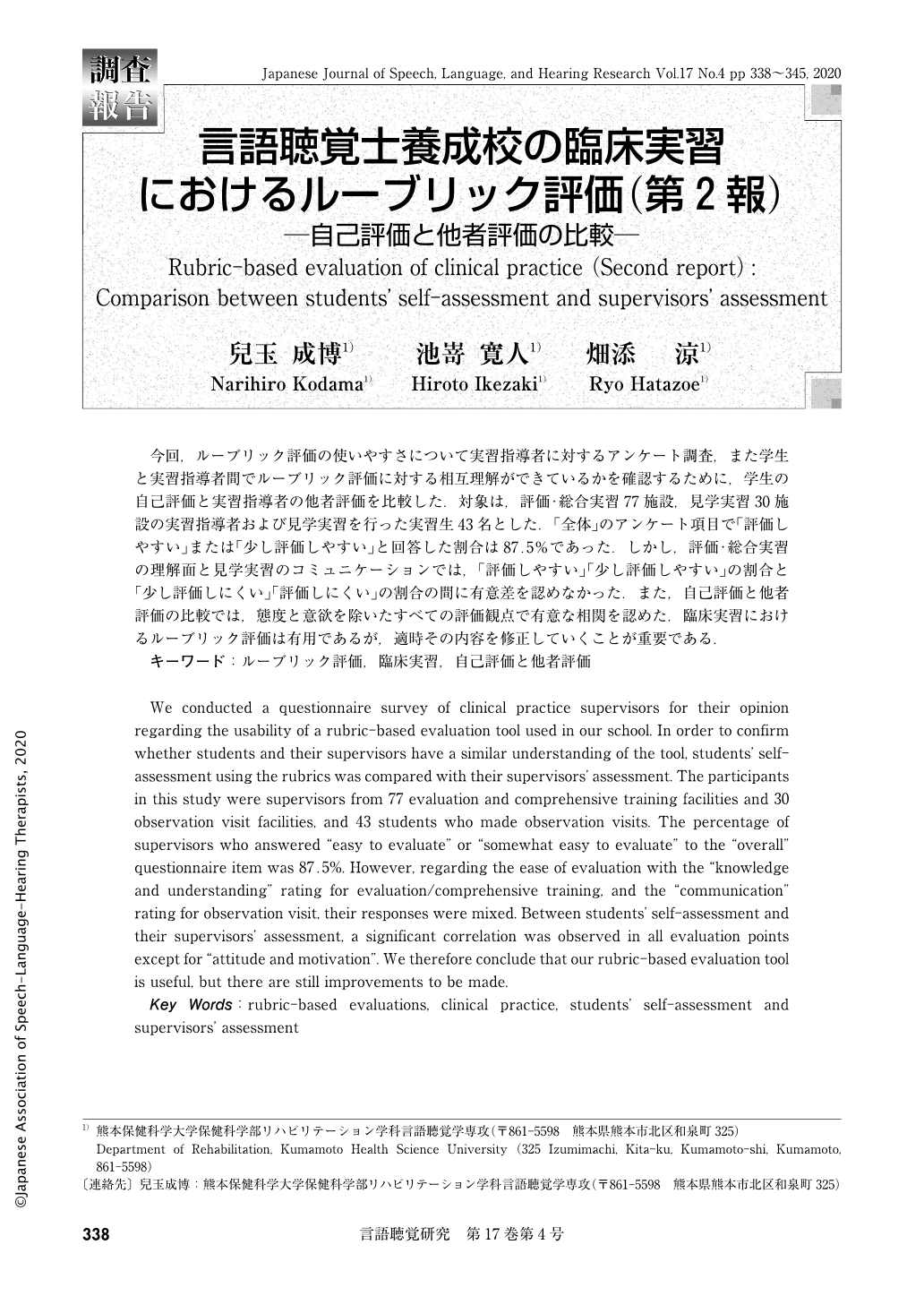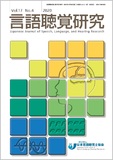Japanese
English
- 有料閲覧
- Abstract 文献概要
- 1ページ目 Look Inside
- 参考文献 Reference
今回,ルーブリック評価の使いやすさについて実習指導者に対するアンケート調査,また学生と実習指導者間でルーブリック評価に対する相互理解ができているかを確認するために,学生の自己評価と実習指導者の他者評価を比較した.対象は,評価・総合実習77施設,見学実習30施設の実習指導者および見学実習を行った実習生43名とした.「全体」のアンケート項目で「評価しやすい」または「少し評価しやすい」と回答した割合は87.5%であった.しかし,評価・総合実習の理解面と見学実習のコミュニケーションでは,「評価しやすい」「少し評価しやすい」の割合と「少し評価しにくい」「評価しにくい」の割合の間に有意差を認めなかった.また,自己評価と他者評価の比較では,態度と意欲を除いたすべての評価観点で有意な相関を認めた.臨床実習におけるルーブリック評価は有用であるが,適時その内容を修正していくことが重要である.
We conducted a questionnaire survey of clinical practice supervisors for their opinion regarding the usability of a rubric-based evaluation tool used in our school. In order to confirm whether students and their supervisors have a similar understanding of the tool, students' self-assessment using the rubrics was compared with their supervisors' assessment. The participants in this study were supervisors from 77 evaluation and comprehensive training facilities and 30 observation visit facilities, and 43 students who made observation visits. The percentage of supervisors who answered “easy to evaluate” or “somewhat easy to evaluate” to the “overall” questionnaire item was 87.5%. However, regarding the ease of evaluation with the “knowledge and understanding” rating for evaluation/comprehensive training, and the “communication” rating for observation visit, their responses were mixed. Between students' self-assessment and their supervisors' assessment, a significant correlation was observed in all evaluation points except for “attitude and motivation”. We therefore conclude that our rubric-based evaluation tool is useful, but there are still improvements to be made.

Copyright © 2020, Japanese Association of Speech-Language-Hearing Therapists. All rights reserved.


